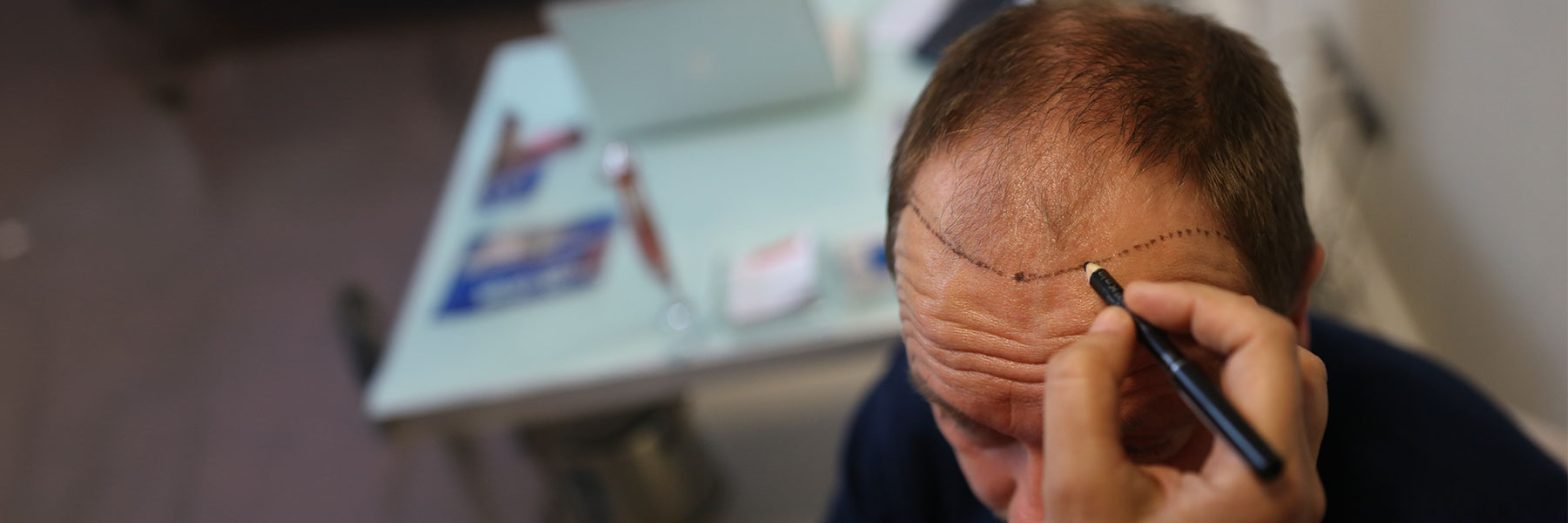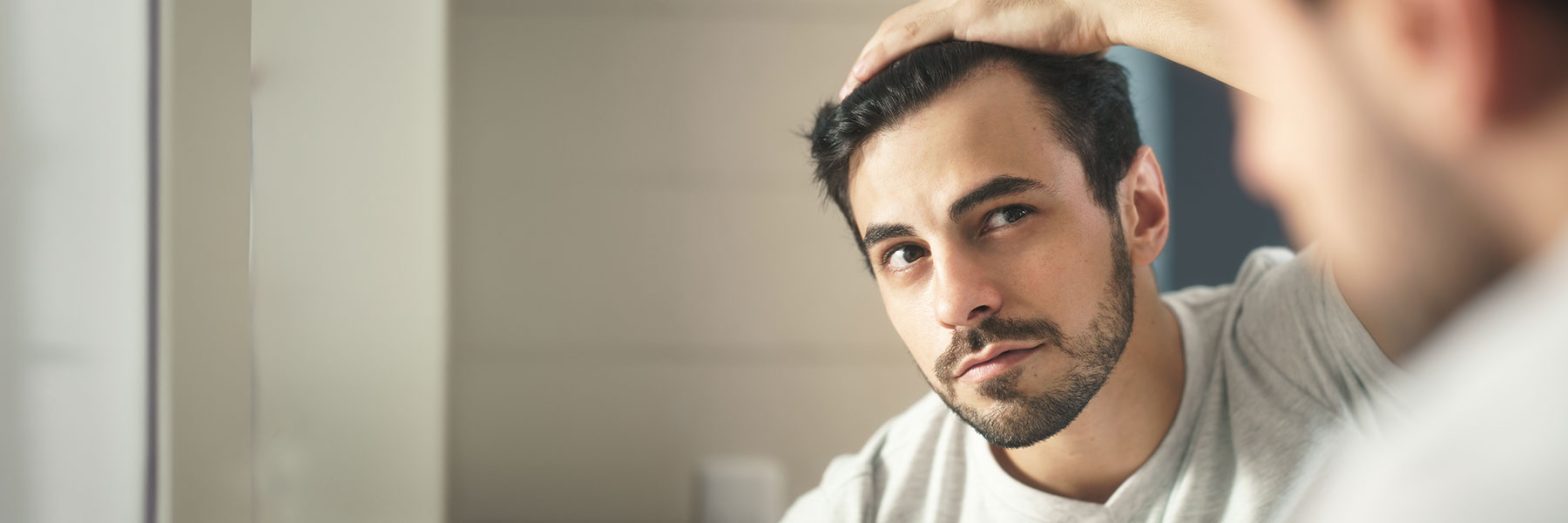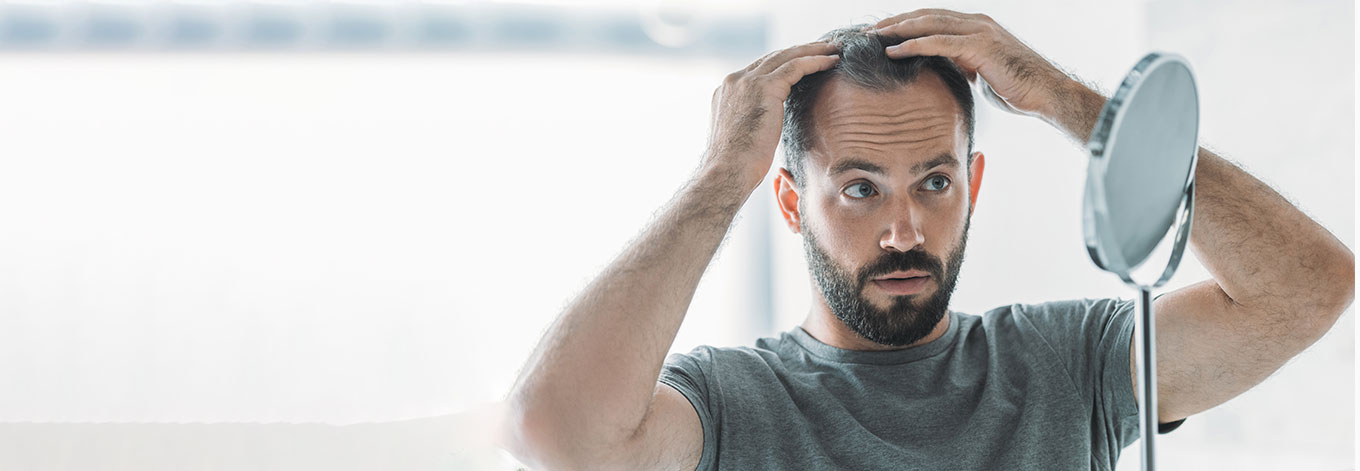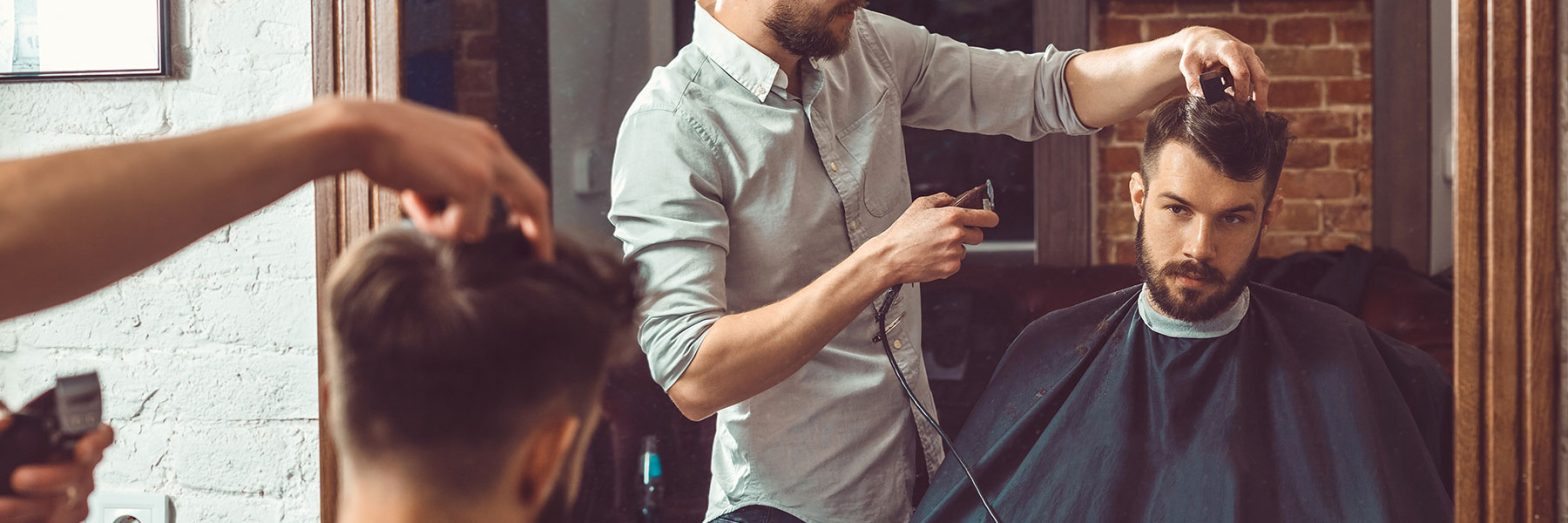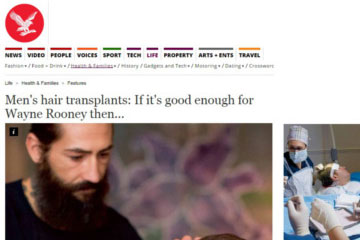
Men’s hair transplants: If it’s good enough for Wayne Rooney then…
HAIR LOSS & HAIR TRANSPLANTS
The Independent
Fast-forward nine years and I am sitting in The Private Clinic on London’s Harley Street, where a Greek doctor is running her fingers through my emaciated locks and showing me traumatising photographs of the top of my head. I had known it was bad, but not that bad. At the front, a long spit of land jets out into a wide fleshy sea. The back and middle are a pale planet, with only the gentlest wisps of light brown cloud circling its barren pole. Why hadn’t anyone told me?

We’re friends now, Dr and I, so I’m sure she won’t be upset if I spell out her blunt diagnosis to me that day in a pseudo-phonetic way that still rings in my ears: “In the back, it’s a theeenin’. In the meedle, it’s a theeenin’. In the front, there is a naaathing.”
The solution she was offering is a pioneering one. Yes, it is a hair transplant, but with a difference. Dr is one of the few surgeons to offer the procedure ‘unshaven’. No need to razor-blade off what little you’ve still got. No need to wait months for it to grow back. Just five days off work. No one ever need know.
For an industry substantially driven by vanity, insecurity and degrees of body dysmorphia, this is revolutionary. “Many people want the procedure,” she says. “But they do not want to shave their heads. They are businessmen, or politicians, or people from TV. They cannot have no hair for many months.”
So minimally invasive is it, and so quick, she says, “many people do not even tell their wife”. (That last claim, by the way, I was certain was a fib. I turned out to be wrong.)
It took me four months to decide. Among the forms you have to sign is one that requires you to essentially confirm that going bald has destroyed your confidence, that you are psychologically affected.
I had thick hair, and lots of it, for years after the Sandown races incident, when I was 22 years old. I was probably 29 before I was in possession of what I now know to be called a Stage 3 on the Norwood Scale of male pattern baldness, aka ‘the Phil Collins’: a long narrow headland of hair, set between two wide bald bays.
Baldness was just something you had to accept, and I accepted it. But then, three years ago, the facts seemed suddenly rewritten, at least in popular culture, in 140 characters and a little photo, courtesy of Wayne Rooney.
When he emerged on the first day of the football season looking like a > man with six or seven years suddenly lifted off his shoulders, it rather laid bare the full cruelty that baldness inflicts on a young man.
Cosmetic surgery – and a hair transplant is cosmetic surgery – is a curious thing, arguably the defining insanity of our era. Father Time will come for us all. It is life’s only certainty.
Baldness, I might venture, is a different matter. It is a random, terroristic attack on the power and beauty of youth. It is Mother Nature throwing a bucket of acid in your young face. Yes, there are ‘sexy bald men’ like Bruce Willis, but he is also a handsome man, who would be more handsome unbald. And then there are unsexy bald men, like the philosopher Alain de Botton, who quite rightly describes it as “almost analogous to disability”.
These were the thoughts I was mulling over when I returned to Harley Street four months later. Some more photographing of my head revealed that during my lengthy deliberations my hair loss had been, in Dr forthright words, “very aggressive”.
I signed the forms and was back in two weeks, this time being eased into a surgical gown and having a blue line drawn far down on my forehead. That there had once been hair all the way down here seemed preposterous, like those natural history time-lapse reconstructions that show the Sahara was once a mighty ocean.
The actual day is divided into two parts, each of five hours or so; first extraction, then implantation. It starts with two jabs of local anaesthetic in the centre of the forehead, then Dr gets to work with a small, highly-specialised instrument which punches tiny holes, less than a millimetre in thickness, and scoops out precious hair.
For some reason, DHT rarely wreaks its lethal menace on the follicles to the back and side of the head. The factories there remain almost fully productive for as long as their owner does. Transplanting follicles from here to the top and front of the head doesn’t alter their susceptibility to the dreaded DHT. They’re good for life, wherever they are reinserted.
As such, the thousands of little punctures Dr is making to the back of my head – the donor area – with her special little needle, scoops out not just a hair, but an entire follicle each time, the tissue, the sebaceous gland, the lot. Mmm. One by one they are passed to her assistant, who cuts off the actual hair, leaving just the follicle, and lines them up on a silver tray.
After five hours of this, we are done: 2,793 in total, but that’s hairs, not follicles. Some follicles will have two or possibly three hairs growing from them. How many hairs each follicle produces will affect where they are placed on the front of the head. Some people have 9,000 or more. That takes two days. But the donor area at the back of the head is a different size for everybody, and can only spare so many. It’s wise to keep some back in reserve, too. You may find yourself coming again.
It is the insertion in the afternoon that Dr says is the “creative” part. More anaesthetic is injected, and thousands more tiny little holes are punched. The challenge, when placing these follicles, is to make sure they are pointing in the right direction of growth, that the newly created hair line is natural. Human beings have a powerfully-tuned eye to even the slightest bodily imperfection. It is among our most basic instincts. Poorly-done cosmetic surgery regularly ruins lives. “No two surgeons are the same,” she says. “It comes from many years of practice.” It is certainly painstaking work. Hour after hour, extracting and inserting single hairs, one after the other, after the other. “You have to love your job. I love it.”
At the end of a very long day, I am shown my new head in a mirror. My once expansive temples have been covered in a sea of white and purple dots.
For the next five days, I cannot wash the top of my head, and it must be sprayed with saline solution every 20 minutes, and as often as can be tolerated during the night. I also have to take antibiotics. In these crucial days, the new follicles are desperately seeking to ‘vascularise’, to reattach themselves to the body’s blood supply.
By day four, the front of my head is still a white, purplish mess, a carpet of tiny, entirely painless little scabs. But on day five, the shampooing begins. Lather the front, leave to soak, apply the most delicate of strokes and the near microscopic little scabs gradually flake away.
On day six, something magic happens. There are actual tiny little bristles. Hundreds of them. Thousands. My great worry had been the prospect of a large swathe of skinhead-style stubble seeming to emerge from underneath my normal, fairly short hair, giving me the appearance of some kind of National Front werewolf, but my concerns were misplaced.
On the morning of day seven, after a good old wash, the front of my head is alive with tiny little hairs and my heart, I confess, is dancing with glee.
It might be psychosomatic, but once I’ve styled it, there are no bright white patches at the temples and I’m convinced I look five years younger, at least.
For the first time, I leave the house, and peering down to catch the reflection of the top of my head on the windows of the Tube carriage, against all odds, the Phil Collins has gone. It is nothing less than a miracle.
This procedure is known as a Follicular Unit Extraction, or FUE, as the hairs are transplanted one by one. Rooney had this done – although not unshaven. It takes many weeks and months to fully thicken, and there are setbacks too. But it is now eight months since my surgery and over the past three, the change has been quick and dramatic .
Follicular Unit Extraction is not cheap. To have it unshaven is more difficult, more time-consuming, and even more expensive. At £5 a hair, my treatment costs around £14,000. There are many places where it can be done cheaper, but not unshaven. Thailand and Turkey are both popular, but horror stories abound.
It seems obvious how important the individual skill of the surgeon is, and that’s not something that’s easy to test, research, or indeed back out of at the other end of a long-haul flight.
Dr has done many corrective procedures on people who have received terrible treatment, including the insertion of hairs around men’s ears, giving them a woman’s hairline. Often the older technique of ‘strip’ surgery is used, where a thick stripe of skin is removed from the back of the head, and cut into pieces with two or three follicles on each and reattached. Decent results are still possible, but the scarring can be so severe that a second treatment is required just to cover it up. The industry, both at home and abroad, is essentially completely unregulated.
It would be wrong to imagine an FUE transplant solves all one’s hair woes for good. My permanent, unshrinkable new hairs, primarily at the front, will have no impact on how my follicles behave elsewhere. The front rows are sold out, but if the people at the back start sneaking out, there’s nothing I can do.
If Wayne Rooney, Louis Walsh, Robbie Williams and James Nesbitt can be taken as a representative sample, many if not most people who have hair transplants, end up having more than one.
Personally, I am not worrying about that for now. Mainly, I spend my spare time looking at photos of my hair last summer compared to this one, and am giddily overwhelmed by the wonder of my hairy bonce.
I haven’t summoned the required vanity to ask yet, but in the next few weeks I will get my byline photo retaken, possibly the first journalist in all history to do so on the grounds of having more hair.





